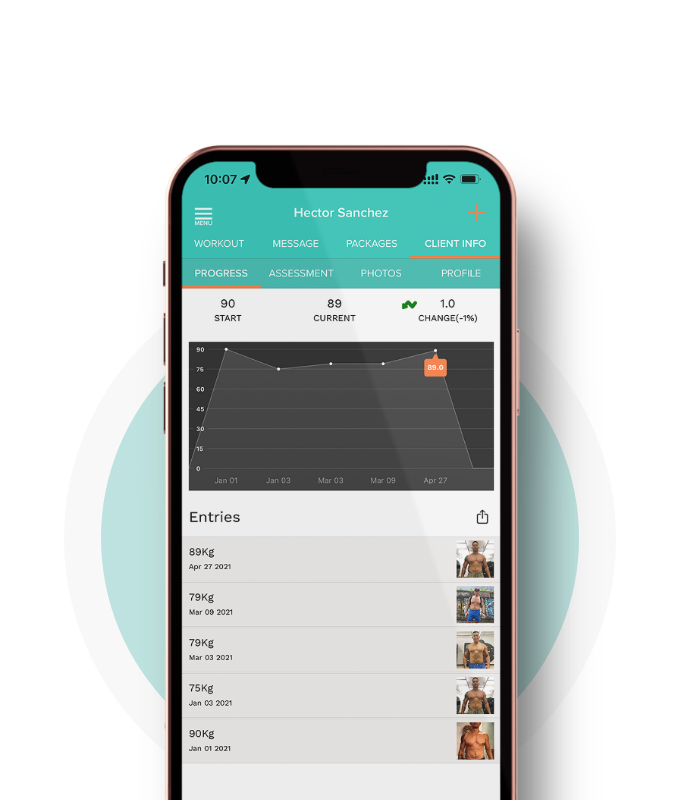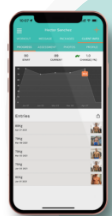Beyond Reps and Sets: How Trainers Shape Mindsets for Lasting Health
You’ve seen it before: A new client comes in, full of enthusiasm, ready to overhaul their life. They’ve tried everything—downloaded all the apps, followed countless fitness programs, maybe even tackled a few fad diets. And then, a few weeks in, it all falls apart. They burn out, lose focus, and slip back into old habits. As a personal trainer, your job isn’t just to push them through a workout. You’re the architect of their behavior change. You’re there to guide them toward long-term transformation, not just short-term results.
In the world of personal training, it’s all about shifting mindsets. As trainers, we’re in a unique position to help clients transition through the stages of behavior change, eventually embedding fitness into their lifestyle for good. This process isn’t random or based on guesswork—it’s deeply rooted in science, particularly the Stages of Change Model (SCM), also known as the Transtheoretical Model, created by James Prochaska and Carlo DiClemente.
The science? It’s gold for trainers. Once you understand how clients move through the stages of behavior change, you’re better equipped to guide them. Let’s break it down, step by step, and explore how personal training can be the catalyst for sustainable fitness habits.
Understanding the Stages of Change Model (SCM)
So, what is the SCM, and why should you care? The SCM breaks down behavior change into five stages:
1. Precontemplation: The client isn’t even thinking about change.
2. Contemplation: They know they need to change but aren’t ready yet.
3. Preparation: They’re making small steps, getting ready to commit.
4. Action: The client is in the thick of it—committed, engaged, and making progress.
5. Maintenance: They’ve been consistently active, but staying there requires continuous effort.
As a trainer, your job is to move clients along this journey, and the tools you use can make all the difference. I’m not just talking about the perfect squat form here (though that’s important!). I’m talking about goal setting, overcoming barriers, and—most crucially—relapse prevention.
How Personal Training Moves Clients Through the Stages
Let’s take a closer look at how we as personal trainers directly impact our clients’ progression through these stages.
1. From Contemplation to Preparation: Sparking the Motivation
Clients in the Contemplation stage know they need to make a change, but they haven’t fully committed. They’re sitting on the fence. Your role is to tip them over into action—and this is where motivational interviewing comes in. Ask open-ended questions, listen more than you speak, and help them verbalize their own reasons for wanting to change.
Remember, it’s about making them feel empowered. One of the most effective tools for this is goal setting. The key here is setting SMART goals—Specific, Measurable, Achievable, Relevant, and Time-bound. By creating a roadmap, you’re giving them the nudge they need to start preparing for a change.
How does this tie into tracking? Think about it: when a client can see tangible progress, they’re more likely to move from Contemplation to Preparation and beyond. This is where tools like The Training Notebook come in handy. The app allows trainers to track client progress, set and adjust goals, and give real-time feedback, keeping clients motivated at every stage of their journey.
2. From Preparation to Action: Making the Jump
Clients in the Preparation stage are getting ready to make a change. They might be cutting down on fast food, signing up for a gym membership, or Googling “how to get fit.” But they haven’t fully committed yet. Here, your job is to help them take the leap.
One powerful method is to help them overcome perceived barriers. These barriers can range from time constraints to fear of failure, and overcoming them is essential. As a trainer, you need to show them that fitness isn’t just for “other people.” It’s for them. This could mean starting with easy wins, like 15-minute bodyweight sessions at home, which can slowly progress into more structured routines.
It’s also essential to keep things simple. Overloading clients with complex workout routines or nutrition plans can push them back into the Contemplation stage. A better approach is gradual, building their confidence until they’re ready for full commitment.
3. Action: The Crucial Turning Point
The Action stage is where the magic happens. The client is finally committed to regular workouts, healthy eating, and long-term fitness goals. But this is also where things can fall apart. After all, how many people start strong only to lose motivation after a few weeks?
The key here is consistency and tracking progress. When clients can see their gains—whether it’s through weight loss, increased strength, or endurance—they’re more likely to stay the course. And tracking doesn’t need to be complex. Simple feedback loops are incredibly effective.
This is where The Training Notebook can shine again. Trainers can use it to easily track workout performance, assess client progress, and adjust goals in real time. The app simplifies data collection, so you don’t have to fumble with spreadsheets or notebooks. Instead, you can focus on what matters—helping your client stay on track and pushing them just a little bit harder each session.
4. Maintenance: The Long Game
The final stage, Maintenance, is where a lot of trainers and clients falter. Once a client reaches their goals, how do you keep them there? Fitness isn’t about reaching a specific weight or completing a race—it’s about maintaining those gains over the long term. Here, relapse prevention is everything.
Behavior change studies show that even when people hit the Maintenance stage, they’re at risk of falling back into old habits. As trainers, our job is to keep them engaged, both mentally and physically. This can mean rotating workout plans, introducing new challenges, or even focusing on different fitness goals like mobility or flexibility. Keep it fresh.
Another tactic is to help clients anticipate roadblocks. Holidays, vacations, and life stressors will inevitably pop up. By preparing them for these moments and giving them tools to deal with them (like quick bodyweight workouts when they’re traveling or stress-relieving stretches), you can help prevent setbacks.
The Bigger Picture: You’re Not Just Teaching Exercises—You’re Changing Lives
By now, it should be clear that personal training is about more than just showing someone how to do a proper deadlift or teaching them about macros. It’s about guiding clients through a scientifically-backed process of behavior change that leads to sustainable, long-term fitness habits. You’re shaping attitudes, helping clients navigate the psychological obstacles of fitness, and—most importantly—building habits that last.
Incorporating tools like The Training Notebook streamlines the process for you as a trainer, but more importantly, it gives clients that continuous feedback loop. It’s the visual, tangible evidence they need to stay motivated. And when clients can see their progress, they’re more likely to stay in the Maintenance stage and less likely to relapse.
The work you do goes far beyond sets and reps—it changes lives. Understanding the science of behavior change and how it applies to your clients gives you a serious edge. It’s the difference between clients who fall off the wagon after a few months and those who make fitness a lifelong habit. And that, right there, is the magic of personal training.
By:
Hector Sanchez
CEO, The Training
Notebook
References:
1. Prochaska, J. O., & Velicer, W. F. (1997). The Transtheoretical Model of health behavior change. American Journal of Health Promotion, 12(1), 38-48. DOI: 10.4278/0890-1171-12.1.38
2. Cioffi, C. E., Wilhelm Stanis, S. A., Levick, N., & McLeod, M. (2013). Personal Trainers’ Perceptions of Role in Behavior Change. International Journal of Environmental Research and Public Health, 10(11), 5862-5876. DOI: 10.3390/ijerph10115862
3. Marcus, B. H., & Forsyth, L. H. (2003). Motivating People to Be Physically Active. Human Kinetics Publishers. ISBN: 9780736055355.
4. Marcus, B. H., Dubbert, P. M., Forsyth, L. H., McKenzie, T. L., Stone, E. J., Dunn, A. L., & Blair, S. N. (2000). Physical Activity Behavior Change: Issues in Adoption and Maintenance. Health Psychology, 19(1S), 32-41. DOI: 10.1037/0278-6133.19.S1.32




